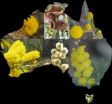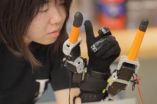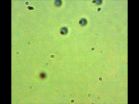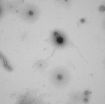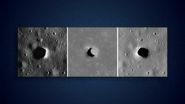(Press-News.org) Despite a deluge of new information about the diversity and distribution of plants and animals around the globe, "big data" has yet to make a mark on conservation efforts to preserve the planet's biodiversity. But that may soon change.
A new model developed by University of California, Berkeley, biologist Brent Mishler and his colleagues in Australia leverages this growing mass of data – much of it from newly digitized museum collections – to help pinpoint the best areas to set aside as preserves and to help biologists understand the evolutionary history of life on Earth.
The model takes into account not only the number of species throughout an area – the standard measure of biodiversity – but also the variation among species and their geographic rarity, or endemism.
"For most people, species are something special, but a plant like a dandelion, with lots of close relatives, shouldn't be counted equal to our endemic redwood, which has no close relatives," said Mishler, a UC Berkeley professor of integrative biology. "We now have a more complex view of biodiversity that takes into account more than the number of species, but also their rarity in the landscape and the rarity of close relatives."
The model, which requires intense computer calculations, is described in this week's online edition of Nature Communications.
"If our goal is to preserve the tree of life and pass it on to our children, then it's important to preserve not only the cradles of new species, the neoendemics, but also the refuges of rare and threatened species, the paleoendemics; the nurseries and the nursing homes," said Mishler, director of the University and Jepson Herbaria at UC Berkeley and senior fellow at the new Berkeley Institute for Data Sciences (BIDS).
Mishler and his colleagues created the model, which they call categorical analysis of neo- and paleoendemism (CANAPE), while he was in Australia in 2011 to take advantage of the country's comprehensive plant database. Australia is ahead of the United States in terms of digitizing its museum collections and geographically coding, or georeferencing, them, he said.
Identifying California's Preservation Needs
The model can be used, however, with any good georeferenced database of species abundance and relatedness, Mishler said. He, Bruce Baldwin and David Ackerly, UC Berkeley professors of integrative biology, earlier this year received a $391,000, three-year grant from the National Science Foundation to apply CANAPE to the state's plant databases, primarily that of the Consortium of California Herbaria.
"These new methods will allow assessment of conservation reserve coverage and identify complementary areas of biodiversity that have unique evolutionary histories in need of conservation," Mishler said.
Early results from California already have pinpointed regions – such as the upper Sacramento Valley near Lake Shasta, the coastal redwood belt and the San Francisco Bay Area's unique serpentine soil areas – as hotbeds of endemic biodiversity worthy of preservation.
Use the Entire Tree of Life
Mishler's model basically takes a yardstick to the limbs, branches and twigs of the tree of life, the branching diagram that illustrates the relationship of one species to another. The terminal "buds" of each twig are today's living species, and the nearness of twigs represents how closely species are related.
The tree was initially a metaphor for the relatedness of all species. Charles Darwin referred to the tree of life in his seminal 1859 book, "On the Origin of Species." But genetic comparisons and molecular dating have in the past several decades provided exact lengths, in years, for most of these branches, indicating how long ago a species had a common ancestor. That wealth of phylogenetic information has not yet been fully taken into account in assessments of biodiversity, Misher said.
"If we look only at the diversity of species – the twigs on the tree of life – we aren't taking advantage of all this branch information," he said. "It's like looking at the frosting instead of the whole cake."
The new method starts with the branches connecting the species in a specific area, so-called phylogenetic diversity, but then gives more weight to those branches that are endemic – that is, restricted in range. This "relative phylogenetic endemism" is a better measure of diversity and rarity, Mishler argues, and should be what scientists and policymakers look at when considering whether to conserve an area.
"This provides a powerful conservation argument as well as a method of identifying areas containing endangered lineages we need to protect," he said. "Since we can't save everything, we have to prioritize our conservation efforts, and this helps."
Such an analysis can pinpoint and differentiate between areas with clusters of new, emerging species (neoendemics) and areas with clusters of unique, but disappearing, species (paleoendemics) that often occupy refuges such as high mountains.
"Our new method lets us spot not only concentrations of endemic lineages, but distinguish the long-lived paleoendemics and the short-lived neoendemics," Mishler said.
The new paper takes as an example a small subset of Australia's flora, its acacia trees. Mishler and coauthors show how one can lay a grid across the entire continent and count not only the species (twigs) in each area, but also the phylogenetic distance between species (the branch length between twigs), measuring down the branch to the nearest junction, then back up to the other twig. Diversity weighted by a branch's endemism yields a unique map of areas of endemism.
The scientists' analysis identified three areas – the rainforests of southwest Western Australia, the Gascoyne region and Tasmania – where conservation efforts might preserve rare endemic species.
According to Mishler, the model could someday establish definitively which regions of the world, such as California or Australia, are the most diverse.
INFORMATION:
Mishler's colleagues are Nunzio Knerr, Carlos E. González-Orozco, Andrew H. Thornhill and Joseph T. Miller of the Centre for Australian National Biodiversity Research in Canberra and Shawn W. Laffan of the Centre for Ecosystem Science at the University of New South Wales in Sydney.
Mishler's work was supported by a Distinguished Visiting Scientist Award from the Commonwealth Scientific and Industrial Research Organisation (CSIRO), Australia's national science agency.
Scientists enlist big data to guide conservation efforts
Tree of Life phylogenies, digitized museum data allow identification of rare endemic lineages
2014-07-18
ELSE PRESS RELEASES FROM THIS DATE:
A new measure of biodiversity
2014-07-18
A new approach to measuring biodiversity has uncovered some biologically important but currently unprotected areas in Western Australia, while confirming the significance of the world heritage listed Wet Tropics rainforests in the country's north-east.
In a paper published yesterday (Friday 18 July) in Nature Communications, scientists from CSIRO, University of California, University of Canberra, the Australian Tropical Herbarium at James Cook University and University of New South Wales applied the new method to Australia's iconic Acacia.
The genus Acacia includes ...
Getting a grip on robotic grasp
2014-07-18
CAMBRIDGE, MA -- Twisting a screwdriver, removing a bottle cap, and peeling a banana are just a few simple tasks that are tricky to pull off single-handedly. Now a new wrist-mounted robot can provide a helping hand — or rather, fingers.
Researchers at MIT have developed a robot that enhances the grasping motion of the human hand. The device, worn around one's wrist, works essentially like two extra fingers adjacent to the pinky and thumb. A novel control algorithm enables it to move in sync with the wearer's fingers to grasp objects of various shapes and sizes. Wearing ...
Biomarker discovery may lead to new HIV treatment
2014-07-18
Further analysis of a Phase II study of therapeutic HIV vaccine candidate Vacc-4x revealed a potential biomarker associated with participants who experienced a more profound viral load reduction after receiving the vaccine. The results of this exploratory, ad hoc, subset analysis by St George's, University of London and Bionor Pharma were announced today at the AIDS 2014 Conference in Melbourne, Australia.
If confirmed, the biomarker may be able to predict which patients will benefit most from the therapeutic HIV vaccine candidate Vacc-4x, which is being developed by ...
'Nanocamera' takes pictures at distances smaller than light's own wavelength
2014-07-17
VIDEO:
This is a video demonstrating scanning-stage-based exposure, whereby programmed
motion of a microscope stage is used to write the University's "Block I " logo into the plasmonic film. Each bar in the...
Click here for more information.
Researchers at the University of Illinois at Urbana-Champaign have demonstrated that an array of novel gold, pillar-bowtie nanoantennas (pBNAs) can be used like traditional photographic film to record light for distances that ...
Tiniest catch: University of Arizona scientists' fishing expedition reveals viral diversity in the sea
2014-07-17
A fishing expedition of microscopic proportions led by University of Arizona ecologists revealed that the lines between virus types in nature are less blurred than previously thought.
Using lab-cultured bacteria as "bait," a team of scientists led by Matthew Sullivan has sequenced complete and partial genomes of about 10 million viruses from an ocean water sample in a single experiment.
The study, published online on July 14 by the journal Nature, revealed that the genomes of viruses in natural ecosystems fall into more distinct categories than previously thought. This ...
Lunar pits could shelter astronauts, reveal details of how 'man in the moon' formed
2014-07-17
VIDEO:
This video shows images from NASA's LRO spacecraft of various lunar pits.
Click here for more information.
While the moon's surface is battered by millions of craters, it also has over 200 holes – steep-walled pits that in some cases might lead to caves that future astronauts could explore and use for shelter, according to new observations from NASA's Lunar Reconnaissance Orbiter (LRO) spacecraft.
The pits range in size from about 5 meters (~5 yards) across to more than ...
Older adults who walk out of necessity are at highest risk for outdoor falls
2014-07-17
Older adults are at a greater danger of falling when walking for utilitarian purposes such as shopping and appointments than when walking for recreation, according to a study from UMass Medical School.
"Older adults have two times the risk of falling while walking out of necessity than walking for recreation, and four times greater risk of injury from a fall on a sidewalk than in a recreational area," said Wenjun Li, PhD, associate professor of medicine in the Division of Preventive and Behavioral Health at UMMS and lead author of the study "Utilitarian Walking, Neighborhood ...
Estimating earthquake frequency and patterns in the Puget Lowland
2014-07-17
Boulder, Colo. - The hazard posed by large earthquakes is difficult to estimate because they often occur hundreds to thousands of years apart. Because written records for the Puget Lowland of northwestern Washington cover less than 170 years, the size and frequency of the largest and oldest earthquakes on the Seattle and Tacoma faults are unknown. Past earthquakes can only be estimated through geologic studies of sediments and landforms that are created when faults break the ground surface.
Along the Cascadia margin, the cities of Seattle and Tacoma occupy the Puget ...
Discovery may make it easier to develop life-saving stem cells
2014-07-17
Not unlike looking for the proverbial needle in a haystack, a team of Michigan State University researchers have found a gene that could be key to the development of stem cells – cells that can potentially save millions of lives by morphing into practically any cell in the body.
The gene, known as ASF1A, was not discovered by the team. However, it is at least one of the genes responsible for the mechanism of cellular reprogramming, a phenomenon that can turn one cell type into another, which is key to the making of stem cells.
In a paper published in the journal Science, ...
Losing sleep over your divorce? Your blood pressure could suffer
2014-07-17
Those who experience persistent sleep problems after a divorce stand to suffer from more than just dark circles. They might also be at risk for potentially harmful increases in blood pressure, a new study finds.
A growing body of research links divorce to significant negative health effects and even early death, yet few studies have looked at why that connection may exist.
Divorce-related sleep troubles may be partly to blame, suggest the authors of a new study to be published in a forthcoming issue of the journal Health Psychology.
"In the initial few months after ...
LAST 30 PRESS RELEASES:
Numbers in our sights affect how we perceive space
SIMJ announces global collaborative book project in commemoration of its 75th anniversary
Air pollution exposure and birth weight
Obstructive sleep apnea risk and mental health conditions among older adults
How talking slows eye movements behind the wheel
The Ceramic Society of Japan’s Oxoate Ceramics Research Association launches new international book project
Heart-brain connection: international study reveals the role of the vagus nerve in keeping the heart young
Researchers identify Rb1 as a predictive biomarker for a new therapeutic strategy in some breast cancers
Survey reveals ethical gaps slowing AI adoption in pediatric surgery
Stimulant ADHD medications work differently than thought
AI overestimates how smart people are, according to HSE economists
HSE researchers create genome-wide map of quadruplexes
Scientists boost cell "powerhouses" to burn more calories
Automatic label checking: The missing step in making reliable medical AI
Low daily alcohol intake linked to 50% heightened mouth cancer risk in India
American Meteorological Society announces Rick Spinrad as 2026 President-Elect
Biomass-based carbon capture spotlighted in newly released global climate webinar recording
Illuminating invisible nano pollutants: advanced bioimaging tracks the full journey of emerging nanoscale contaminants in living systems
How does age affect recovery from spinal cord injury?
Novel AI tool offers prognosis for patients with head and neck cancer
Fathers’ microplastic exposure tied to their children’s metabolic problems
Research validates laboratory model for studying high-grade serous ovarian cancer
SIR 2026 delivers transformative breakthroughs in minimally invasive medicine to improve patient care
Stem Cell Reports most downloaded papers of 2025 highlight the breadth and impact of stem cell research
Oxford-led study estimates NHS spends around 3% of its primary and secondary care budget on the health impacts of heat and cold in England
A researcher’s long quest leads to a smart composite breakthrough
Urban wild bees act as “microbial sensors” of city health.
New study finds where you live affects recovery after a hip fracture
Forecasting the impact of fully automated vehicle adoption on US road traffic injuries
Alcohol-related hospitalizations from 2016 to 2022
[Press-News.org] Scientists enlist big data to guide conservation effortsTree of Life phylogenies, digitized museum data allow identification of rare endemic lineages

